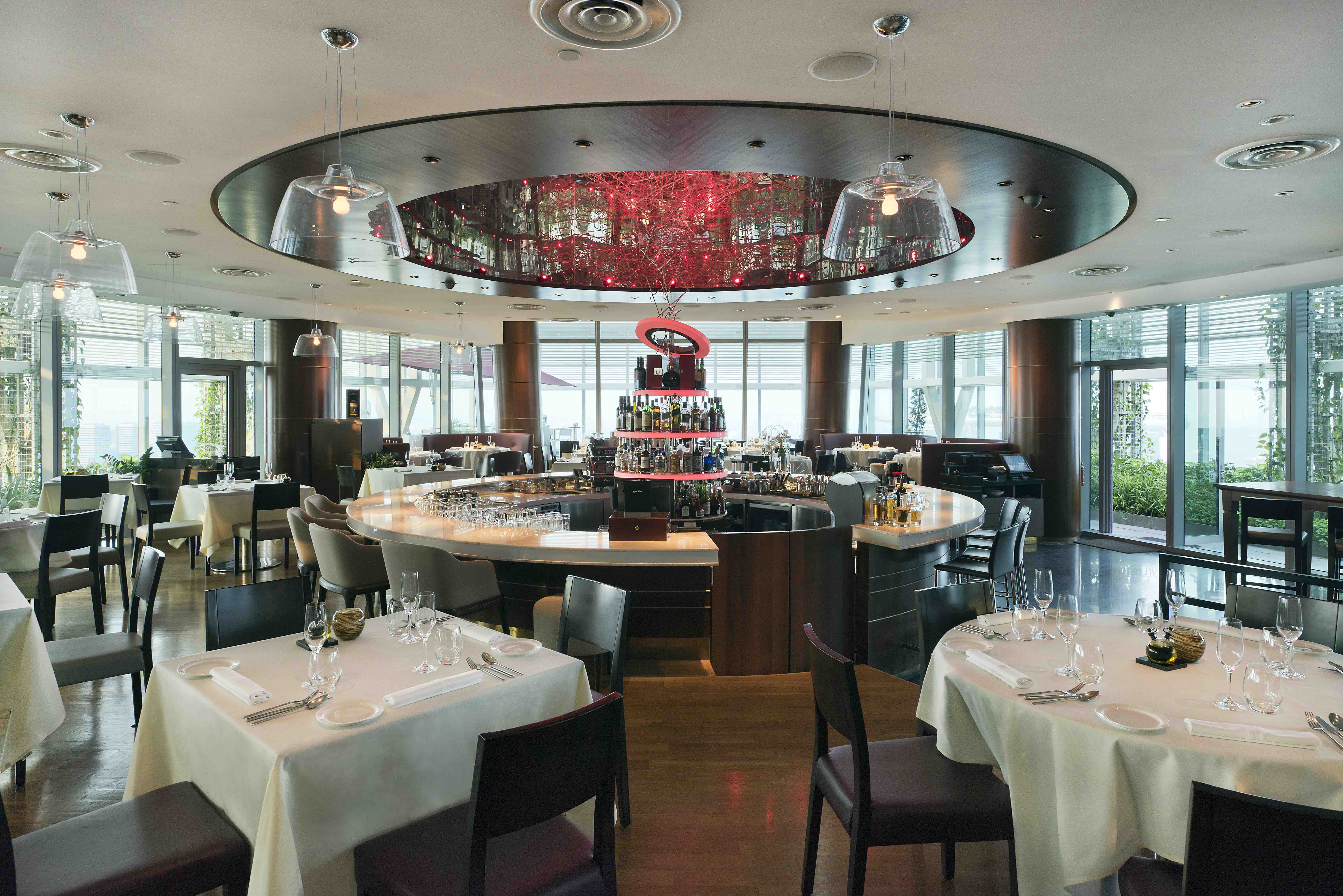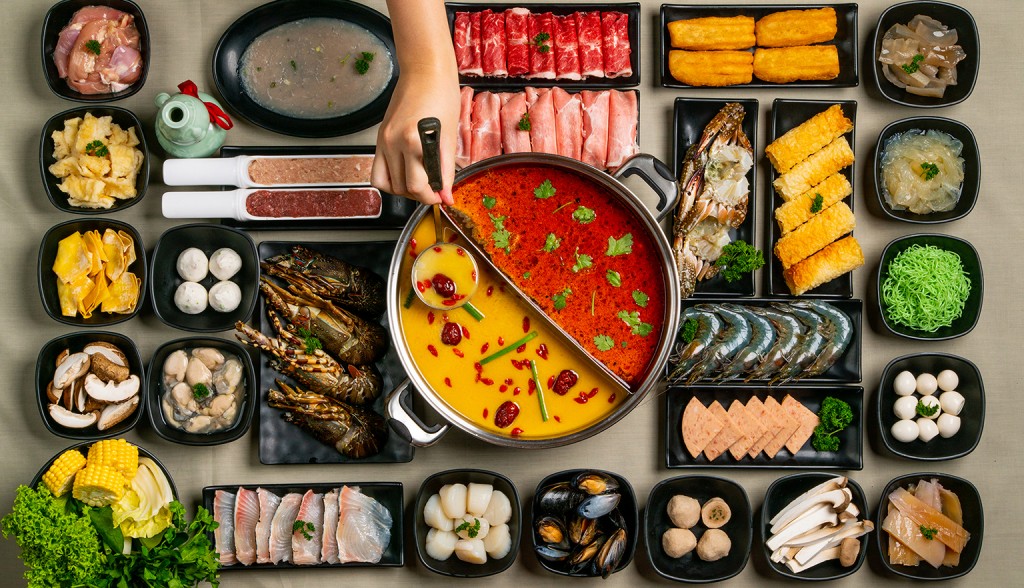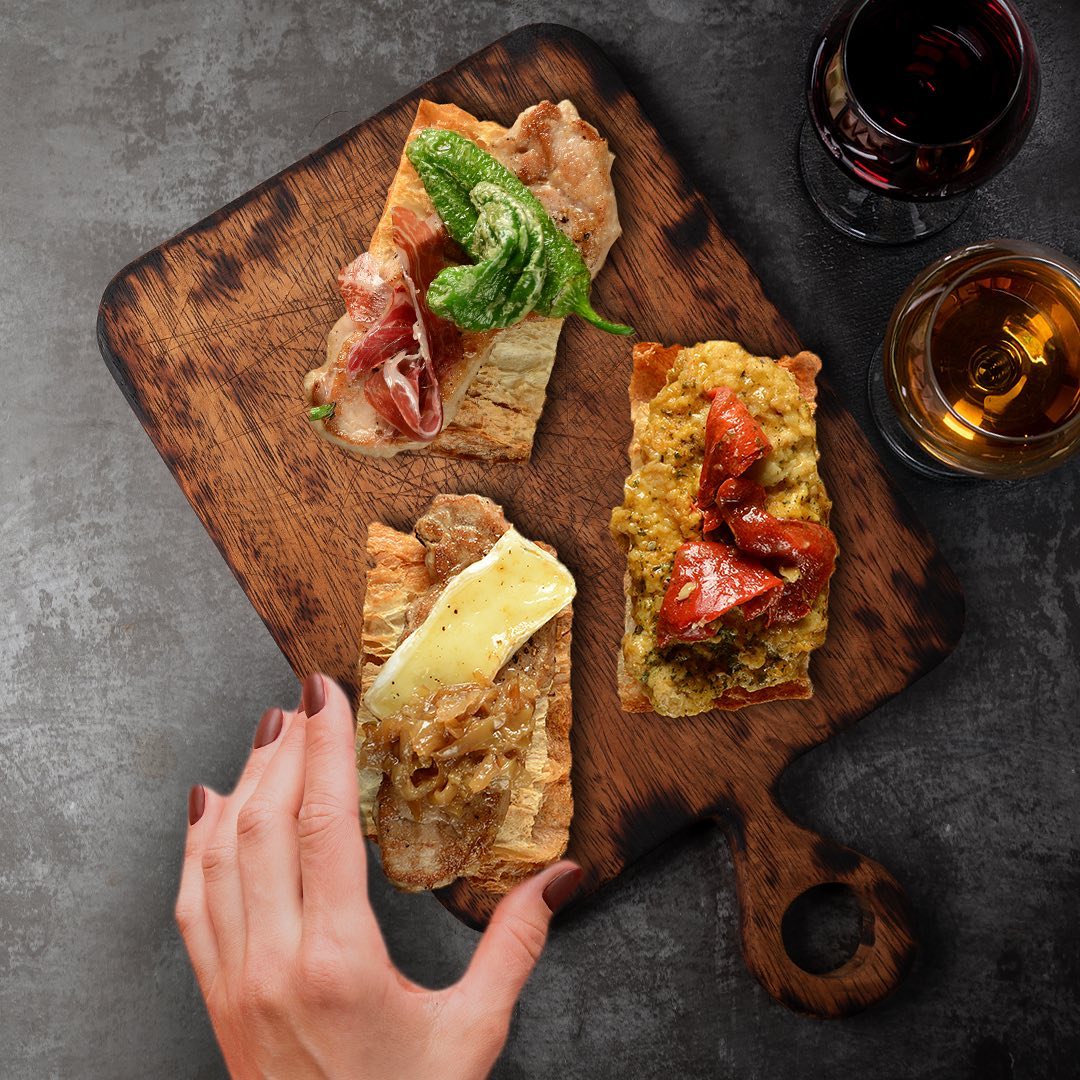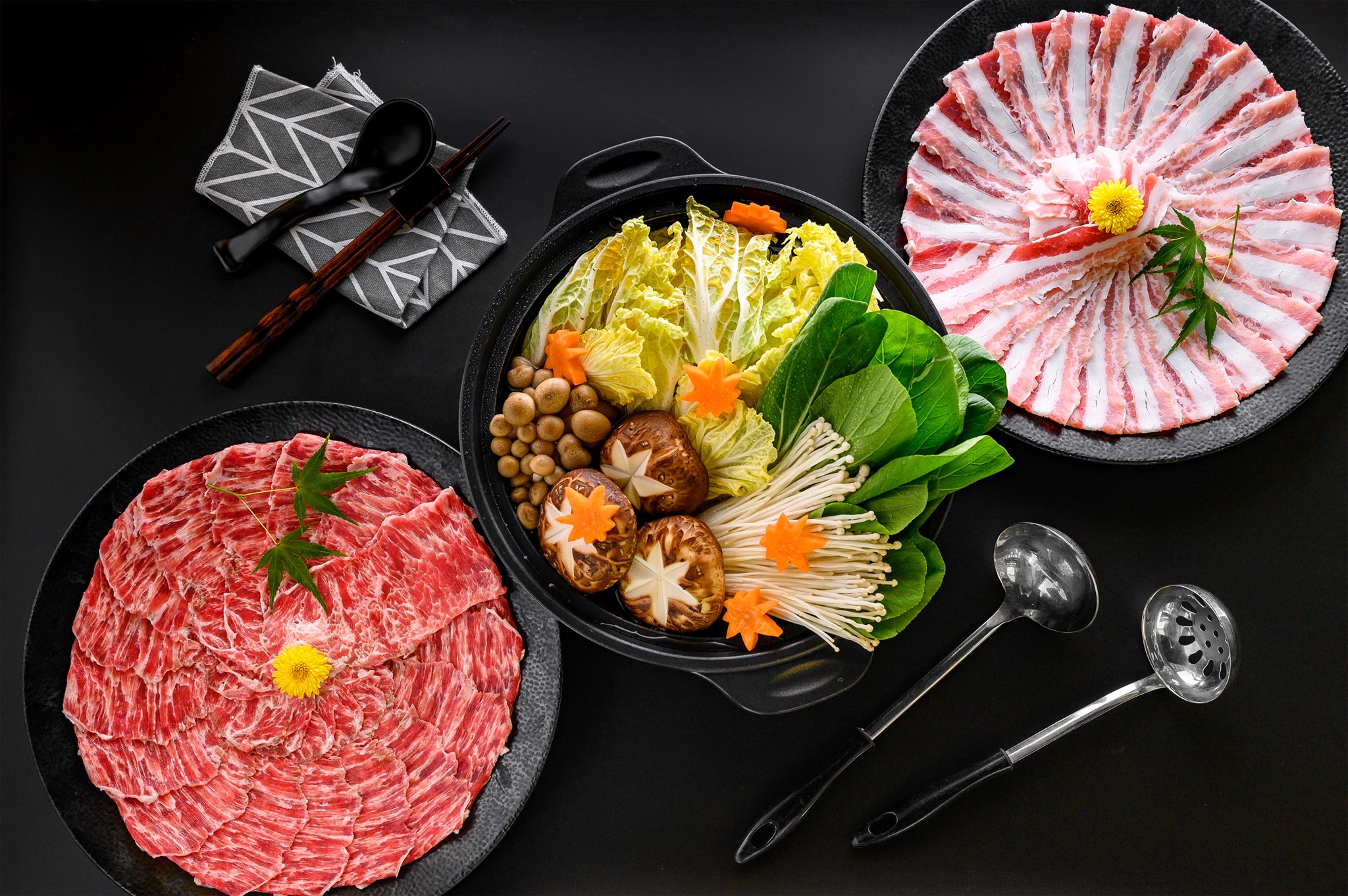Mock meat hasn’t had the best run in Singapore. For a country whose national pride is its cuisine, who thrives on dishing out wok-charred plates fried in lard, it’s practically impossible to embrace a meatless life. There have been admirable entries into the market by meat-alternative brands Quorn and Beyond Burger, but those largely remain the in the scope of vegetarians and vegans. For the rest of us, you can still smell the stigma wafting around the tray of untouched mock meat sitting in the vegetarian stall window, dyed a garish red the colour of Satan’s sweat.
So when a new entrant arrives, with the promise of replicating the feel of meat to a T, and the bold declaration that they’re targeting meat-eaters—we sit up and take note. California-based Impossible Foods first properly burst onto the global dining scene in 2016, with their debut and eventually most famous product: the Impossible Burger. Boasting a patty made entirely from plants, the burger had more protein, less fat, no cholesterol, and a much greener impact on the environment. Most remarkable of all, a magic ingredient called heme still used today made the burger “bleed”.
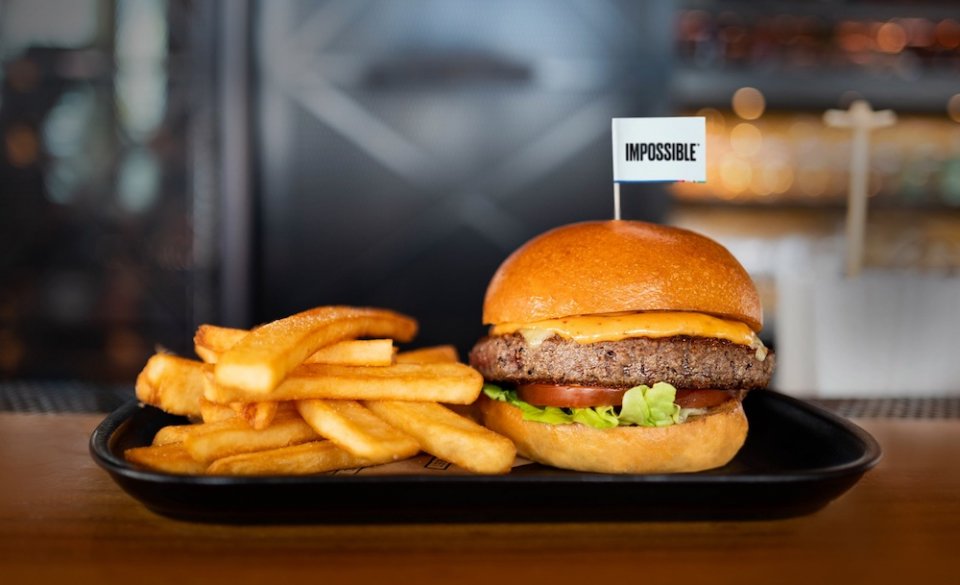
The Impossible BSK Burger
After successfully taking over Hong Kong last year, they’ve set their sights next on little old us. A new and improved version, the Impossible 2.0—free of gluten, cholesterol, animal hormones and antibiotics— launched officially last week (Mar 7) at eight restaurants around the island: Adrift by David Myers, Bread Street Kitchen by Gordon Ramsay, CUT by Wolfgang Puck, Empress, Park Bench Deli, Potato Head Singapore, Prive Orchard and Three Buns Quayside. At each establishment, chefs were given free rein to incorporate the “meat” into any number of their dishes.
We glossed disinterestedly over the burgers, paying even less attention to the Asian dishes that used the meat in the most inconspicuous of ways. It was Gordon Ramsay’s iconic Beef Wellington remake, The Impossible Wellington ($39), however, that caught our attention. Bent over the bustling counter at Bread Street Kitchen, executive chef Sabrina Stillhart methodically rolled the world-famous pastry, enveloping the raw pink meat.
“Treat it the same way you treat beef; it just cooks faster,” she said, adding that she prefers it done medium rare or medium.
When the golden pastry is brought out and served, it looks unmistakably like the regular Beef Wellington. Chef Stillhart slices it open to reveal a pink centre cocooned in a layer of herb crepe and mushroom duxelles.
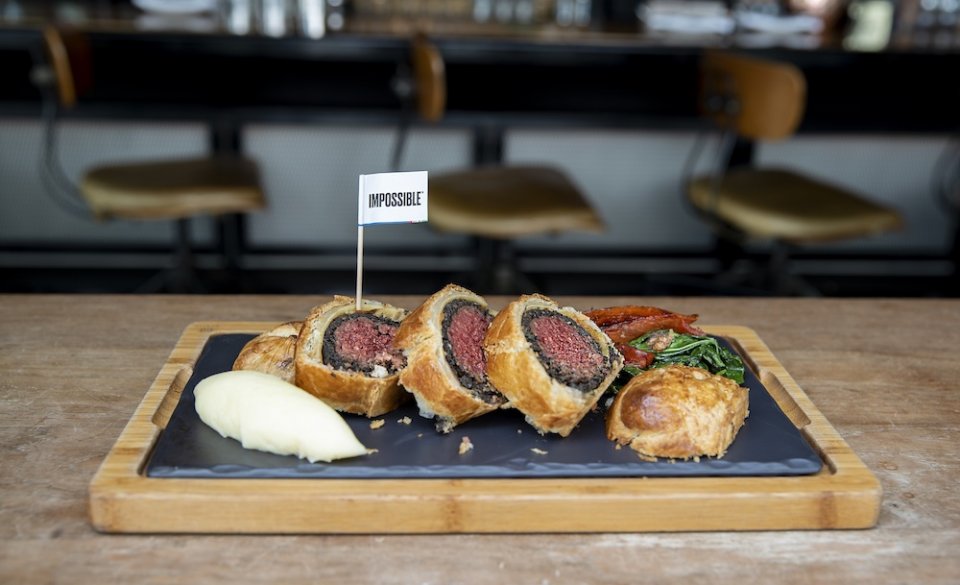
The Impossible Wellington
It tastes exactly how you want it to taste—juicy, tender and bursting with flavour. The chefs of MBS echo the explanation that coconut fat is used in place to achieve the same flavour and juiciness of animal fat. Somewhat comfortingly, there’s less “bleeding” visible here. The only hint of the Impossible Wellington not being fully meat kicks in in the aftertaste, with a lingering mushroom essence; but still that’s nicely masked by the crisp vegan pastry. And at half price of the original, it’s a steal.
Bread Street Kitchen also offers Impossible meat in two other dishes: The Impossible BSK Burger ($25) and The Impossible Flatbread ($24), where the meat is lightly sprinkled over the top. Since the Impossible meat is first and foremost best as a minced meat substitute, you’d be none the wiser in discerning it in those creations.
Sure, there are the succulent Impossible Sliders ($18 for three) over at steak restaurant CUT, not to mention the heartier sandwich and burger options available at Park Bench Deli and Potato Head Singapore respectively. But for a mighty first hello to this seemingly impossible product, take a deep dive into the Impossible Wellington. Name well-earned.
Below, we had the Impossible Foods team dish on breaking into Singapore and the future of their meat.
Welcome to Singapore! How did you land on these restaurants to launch at?
Impossible Foods: We really looked at a culinary diversity; when we launched in Hong Kong we also launched with chefs who are more chef-forward. That’s been our strategy since we launched in the US—to showcase our versatility; that we can be a burger but also be at a Michelin-started restaurant. That’s how we chose our launch partners.
And it just so happened that three of them were in Marina Bay Sands?
IF: MBS is a great resort and they have 80 restaurants under their company. We definitely wanted to showcase the product in a more local cuisine like at Empress, and also a more casual place like Three Buns. And also MBS has the sustainability program, so it much aligns with our mission.
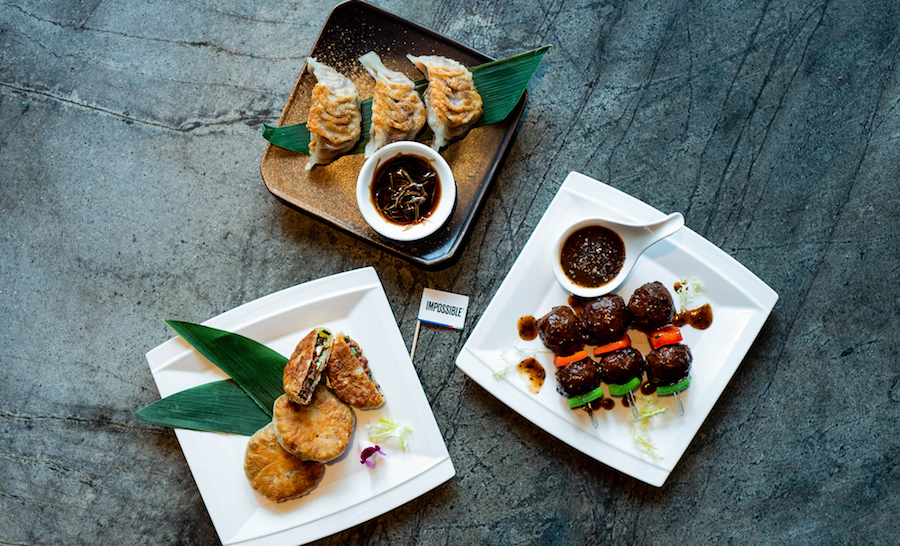
Empress
Aside from burgers, does Impossible branch out into different cuisines?
IF: Definitely. In the US a few Vietnamese restaurants use it for pho; we launched in Hong Kong last year and we’re in about 150 restaurants there now. There are definitely a lot of Chinese restaurants that have been using the product—for Sichuan cuisine, dumplings, mapo tofu, baos. We can really expand across any cuisine since it’s so similar to meat from a cow; it can be used in the same exact way and holds up just like meat from a cow.
When you land at a restaurant, do you leave it up to the chefs to incorporate it into whatever dishes they want to?
IF: We leave it up to the chefs and also we work with them to highlight the versatility; we have people on our team working with them one-on-one to really showcase the product in the best way possible. We let them play with it and test it and see how they want to use it—so Chef Joshua Brown at CUT was saying he found the slider was his favorite format, but at Adrift there’s the sausage roll. So it’s really what the chef wants to do with it; it’s up to them.
Are you looking to expand to more cuisines or restaurants in Singapore?
IF: Definitely, we want to be where meat is—so whatever cuisine or whatever restaurant uses beef or minced meat, that’s where we can obviously come in.
We hear you’re working on a meatless steak?
IF: Yes; so our CEO and founder Pat Brown has talked about that—it’s still in very early stages, but he really wanted to take on the cow. The burger was first, because it’s the single most invasive industry to our planet. So the minced meat was really first, and now he wants to continue. We’re always innovating, always growing, working on all different kinds of protein


